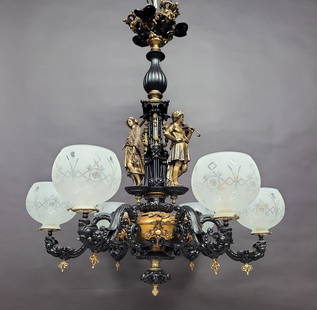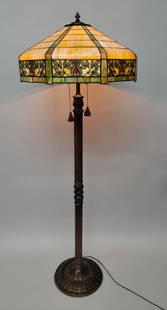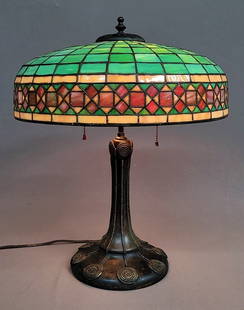
Butter Stamp, Wrought Iron Forks & Copper Pan Ca 1800s
Similar Sale History
View More Items in Tableware & BarwareRelated Tableware & Barware
More Items in Tableware & Barware
View MoreRecommended Home & Décor
View More











Item Details
Description
DESCRIPTION: These are a Pennsylvania butter stamp print mold of a Scottish thistle, a pair of colonial primitive three tine forks from New England, and a colonial miniature open hearth copper double handled apple butter kettle from New England circa 1700s. The earliest butter stamps were often paddle shapes with base relief carvings to be pressed onto the surface of the mound of butter. These evolved into what was later called prints or stamps. In all cases they followed the ancient and honorable Folk Art tradition of hand carved wooden molds and prints used to impress an ornamental pattern on the butter food. These carvers used their own local ethnic differences with such characteristic themes as Pennsylvania tulips and hearts, Scottish thistles, Canadian bent hearts, or patriotic American eagles and pineapples. Pennsylvania molds tended to be more symmetrical and the New England Butter molds were more Asymmetrical. The butter print stamp is deeply carved. There are lots of old age drying cracks and a very old dry surface. The first dinner forks were made with two flat prongs. The earliest two-prong fork to bear an English hallmark and engraved with the coat of arms date to 1632. But when it came to spearing certain foods, such as peas and grains, the widely spaced two-prong fork was impractical, and between the seventeenth and eighteenth centuries the tines increased in number from two to three and then to four. Moreover, from the late seventeenth century to the eighteenth century the profile of the fork changed from flat to slightly curved in shape that accommodated a scoop of soft food, such as peas. The three tine forks are wrought Iion made by blacksmith and have a beautiful primitive detail and style. The three tine forks are slightly curved which makes them American. The bowls on the three tine forks have beautiful shape and form and have both elegance and grace. The handles are made of animal horn and have a tiny copper rivet for stability and wear. Miniature copper apple butter kettles were used in colonial kitchens to make jellies and jams over an open hearth fireplace. The miniature copper apple butter kettle has a wide flared rim that tapers gradually. The miniature apple butter kettle has two copper handles that extend upwards with a fine twist and are decorated with large copper rivets. There is hand hammering on the entire body of copper kettle, which adds such character and beauty to this primitive vessel. MEASUREMENTS: Butter stamp print mold is 3 ½ inches wide and 2 ¾ inches high. One fork is 6 inches long and the other is 6 ½ inches long. Miniature apple kettle is 8 ½ inches wide from handle to handle, 3 inches high not including handle, and 20 inches round in circumference at rim
Condition
The butter stamp print mold has age appropriate wear and patina. The forks and the miniature apple kettle are in excellent condition with an age appropriate patina.
Buyer's Premium
- 0%
Butter Stamp, Wrought Iron Forks & Copper Pan Ca 1800s
Estimate $500 - $700
Get approved to bid.
Shipping & Pickup Options
Item located in Milton, DE, usSee Policy for Shipping
Payment

TOP
















































































